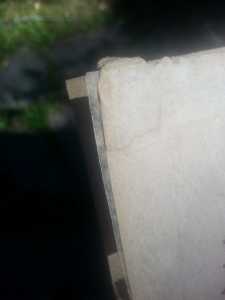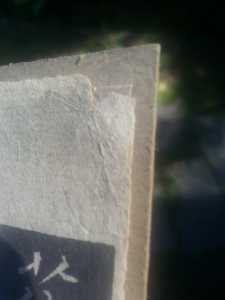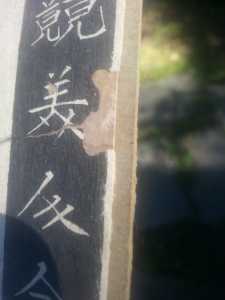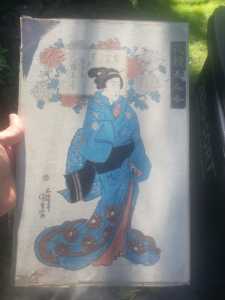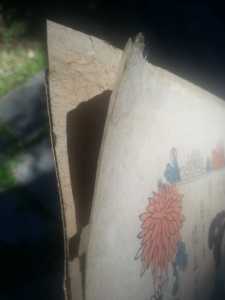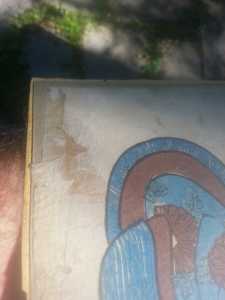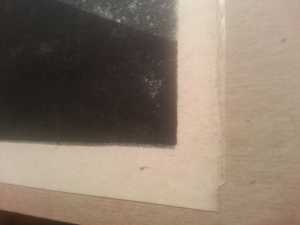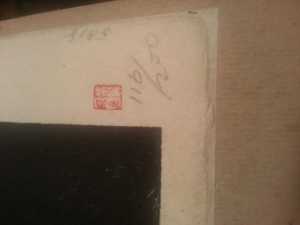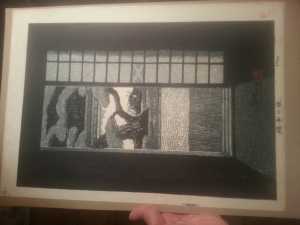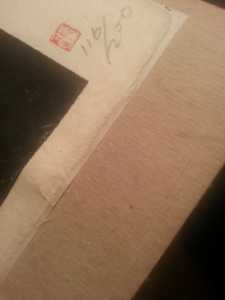The Chinese and Asian Art Forum. For Fans, Collectors and Dealers.
 Basic Rules For the BidAmount Asian Art Forum: Talk about whatever you want. You can even discuss and offer things that are for sale if they are authentic. Maximum image file size per post is 2 MB. Images of 700pxl x 700pxl are optimal if saved at a medium resolution. Be respectful of others and enjoy yourself. Click the YouTube link for a brief tutorial on using the forum. You can also EMBED Videos by cutting and pasting from You-Tube, Vimeo etc.
Basic Rules For the BidAmount Asian Art Forum: Talk about whatever you want. You can even discuss and offer things that are for sale if they are authentic. Maximum image file size per post is 2 MB. Images of 700pxl x 700pxl are optimal if saved at a medium resolution. Be respectful of others and enjoy yourself. Click the YouTube link for a brief tutorial on using the forum. You can also EMBED Videos by cutting and pasting from You-Tube, Vimeo etc.
NOTE: To post an item or add a new post, click open the category title from the FORUM LIST, and CLICK the Blue ADD TOPIC button.
I recently bought a few nice Japanese woodblock prints. Upon taking them out of the frames I found that they were glued or taped to a thin backing board. This of course is not what I was hoping to find, but it wasn't possible to take them out prior to purchasing them. I would like to liberate them from this prison, and so I am researching methods to achieve that goal. I thought I would check to see if any of you have done this sort of work and if so what worked best for you, what type of materials and set is required, etc.? Thanks so much for anything you can share! John
I’ve restored around a hundred woodblock prints.
Depending on the type of tape or glue, you either have water-soluble rice or animal glue, or synthetic glue/tape that can be removed with acetone.
Test with a cotton swab using first whit water. If the tape / glue doesn’t loosen, then the acetone will do the trick.
In rare instances, prints are mounted using an iron on type of contact paper…. It’s waxy and plastic like, and sadly near impossible to remove.
Prints are not generally damaged by water nor acetone unless it’s a print with red dye, or a print that has imbedded mica in the ink.
I thought of using acetone in the past on prints, but have always been scared to do so on any kind of such material. Kool thanks. JT
@greeno107 Thanks for the info, but what do you mean by "whit water"? Did you mean hot water? Also, am I supposed to put the moisture on the edge of the print try to work it slowly up, or do I moisten the whole thing? The three prints I need to do this to are glued or taped (hopefully it's not that iron on crap you mentioned) to thin posterboard type material. Should I moisten the posterboard from underneath as well? Do I moisten top and bottom or just the print itself?
@johnshoe I fat fingered it… yes, warm water…coffee temperature.
Best you post some pics as to the strategy that best suits your prints.
You could bathe the whole print in a plastic bin…. That would remove possible acids in the paper that could be dulling the colors, but there are extra steps for drying to keep the print from wrinkling.
Let’s see what you’ve got, first.
@johnshoe I’d let sleeping dogs lie on this one.
The condition of the paper does not look very stable, and the quality of the print is such that the tape & gluing down wouldn’t significantly effect the value.
Condition aside, this is not a very good example of a 19th c. Courtesan print.
@greeno107 Here is another one. It appears to have a similar mount. You can see the tape or whatever it is around the edge of the print just like the other one. How do I get this off? I hope it isn't that bad case scenario you mentioned before.
@johnshoe This type of hinge is from the original gallery, and is made of mulberry paper (like the print but thinner) and rice glue.
You don’t need to remove it if you don’t have road it didn’t lessen value and won’t damage the print.
If you beef to remove it, just use warm water.
@greeno107 Do I submerge it in the water and let it sit for a period of time to loosen it? Also, won't it wrinkle up upon drying after getting wet? What would be the trick to keeping it nice and flat when drying?
@johnshoe In this case, just wet the hinge.
Are you sure you want to try submerging? You have to be patient. Here goes:
Use a large plastic bin, large enough the print will fit without folding… so maybe 20” x 15”. and about 6-8” deep.
Fill 1/2 way with steaming hot distilled water.
If you want to clean the print, too, add two bottles of standard hydrogen peroxide that you get in the brown bottle from Walmart.
Slide the print into the water…. It will take a few minutes for the paper to absorb the water enough that it stays submerged. Don’t worry if it floats.
Animal glue usually dissolves in about 30 minutes or less, but if your cleaning the print, just leave it in bright sunlight.
If the water turns yellow/brown or milky, have a second bin with room temperature distilled water ready to transfer the print.
The paper is generally really strong, but you want to avoid creasing, so grab the corners, then slide out of the water, and slide back into the freshly prepared bin.
If the glue has dissolved, the print is clean, and you’re ready to dry, then….
Have a 20” x 18” sheet of clean plexiglass ready next to your bin.
Lift the print out of the water by the corners trying not to crease… small creases can be corrected, but not large folds.
Slowly lower the print onto the plexi while it is dripping wet. The wetness helps to avoid trapping bubbles, but if you do get a large bubble trapped, lift the print slowly and start again.
When the print is laying flat on the plexiglass, lay a sheet of white paper towel that is larger than the print, on top of the print.
Starting from the middle, pat & gently rub the paper towel so that it lays smooth on the print. This will push out any small bubbles and/or creases, and at the same time will absorb the moisture (wicking).
When the paper towel is saturated, remove it, then repeat until the paper towel no longer wicks.
Drying should be done in a cool dry location with no direct sunlight.
Take strips of folded aluminum foil and tape them over the corners to keep the print from curling.
If it still curls, then moisten, and add more strips, but move to a cooler location… you’re likely drying too quickly.
In a day or so, the print can be removed from the plexi… use a sharp thin blade to lift a corner and the rest of the print should come up easily.
Store the print in parchment paper…. High end supermarkets sell it in the baking area. Don’t use wax paper!
Tear out a sheet of parchment paper twice the size plus about 4 inches. Fold in half. Place the print inside and fold edges in to create a large envelope.
Put it between two thick pieces of corrugated cardboard, and set a heavy book on top.
The print will be very well preserved for years in this state.
@greeno107 Thanks a million! I'm gonna get geared up with all the needed supplies and give it a shot in the near future. I'll let you know how it goes. Cheers! John
@johnshoe Try first on a print you care nothing for…. If you encountered issues and have more questions, you can ask without risk of ruining a good print
On the second print, the black and white one, I would have a new mat cut and placed in a nice black frame and hang it in a study and enjoy it. It is relaxing.
Thanks for visiting "The BidAmount Asian Art Forum | Chinese Art"
If you sell on eBay, or have a shop feel free to post images and descriptions and links.
Check back often for discussion about the latest news in the Chinese art and antique world. Also find out about the latest Asian art auctions at Sotheby's, Christie's, Bonhams and Tajans.
Auction results for: fine porcelain, ceramics, bronze, jade, textiles and scholar's objects. As well as Japanese, Thai, Vietnamese and other Asian cultures.
Thank you,
Peter Combs
Topics and categories on The BidAmount Asian Art Forum | Chinese Art
Kangxi vases, Kangxi dishes and chargers, Kangxi ritual pieces, Kangxi scholar's objects, Qianlong famille rose, Qianlong enamels, Qianlong period paintings, Qianlong Emporer's court, Fine porcelain of the Yongzheng period. Chinese imperial art, Ming porcelain including Jiajing, Wanli, Xuande, Chenghua as well as Ming jades and bronzes.
The BidAmount Asian Art Forum | Chinese Art
A free Asian art discussion board and Asian art message board for dealers and collectors of art and antiques from China, Japan, Korea, Thailand, Cambodia, Vietnam and the rest of Asia. Linked to all of the BidAmount Asian art reference areas, with videos from plcombs Asian Art and Bidamount on YouTube. Sign up also for the weekly BidAmount newsletter and catalogs of active eBay listing of Chinese porcelain, bronze, jades, robes, and paintings.
The art of calligraphy - and for the ancient Chinese it certainly was an art - aimed to demonstrate superior control and skill using brush and ink. Calligraphy established itself as one of the major Chinese art forms during the Han dynasty (206 BCE - 220 CE), and for two millennia after, all educated men were expected to be proficient at it.
The Museum’s collections of Asian art span nearly five millennia and encompass the cultures of China, the Himalayas, India, Japan, Korea, and Southeast Asia. In 2007, the Museum launched an initiative to create dedicated galleries for the collection, beginning with a gallery for the arts of Korea ...
Chinese art is full of symbolism, in that artists typically seek to depict some aspect of a totality of which they are intuitively aware.
China Online Museum is the finest online museum of Chinese art. It features Chinese calligraphy, painting, ceramics, bronzes, carving, and other artworks.
Chinese Ceramics & Works of Art. Overview Upcoming auctions Contacts Auction results ... Christie’s sales of Chinese ceramics and works of art showcase centuries of Chinese history. Held throughout the year in London, New York, Paris and Hong Kong, they attract a wide audience of collectors and connoisseurs vying for pieces as diverse as ...
Explore Asian Art Week. Contact the Specialist Department. Chinese Paintings ... Senior Specialist, Head of Sale. [email protected]. Tel:+1 212 641 5760. Bid in-person or online for the upcoming auction:Fine Chinese Paintings on 10 September 2019 at New York. Bid in-person or online for the upcoming auction:Fine Chinese Paintings on 10 ...
Discover an abundance of must-see art from all corners of a vast continent at Christie’s NY Asian Art Week. From contemporary classical and Chinese paintings to works with exemplary provenance from the Art Institute of Chicago, our Rockefeller Paza galleries will be full of ancient treasures and contemporary masterworks in a salute to the vibrant arts of Asia.
Sold to benefit The Art Institute of Chicago’s Asian Art Acquisition Fund, the sale features 84 lots with a focus on Ming and Qing porcelains, and offers a rare insight into the taste for collecting Chinese ceramics and works of art in the Midwest from the end of the 19th century through the 1980s. Highlights include two Wanli wucai garlic-head vases, a Qianlong mark and period, blue and ...
Specialist, Chinese Paintings, Christie's London Dr Malcolm McNeill is a Specialist in Chinese Paintings at Christie’s, based in London. He previously worked as an assistant curator of the Chinese collections and the Victoria and Albert Museum in London, as a researcher at the British Museum, and as a translator and tour guide at the National Palace Museum in Taipei.
The Christie's Education 2020 Conference: The Chinese Art Market 18 Jun 2019 Christie’s Education is delighted to announce our first international academic conference in Asia which will take place in Hong Kong from 26-27 November 2020 at the Hong Kong Convention and Exhibition Centre and will run in parallel with Christie’s Hong Kong Autumn Auctions.
The summer Chinese Art sale in Hong Kong will feature works of art from several private collections, including Qing porcelains and textile from the collection of the legendary Chinese art dealer A. W. Bahr (1877–1959), fine gilt bronze Buddhist sculptures from an old Hong Kong collection, an East Asian collection of Qing dynasty wine cups and jades, and a Japanese collection of Song ceramics ...
Sotheby's Chinese Works of Art Department holds two auctions each year in London, New York, Hong Kong and Paris.
Chinese Art - View Auction details, bid, buy and collect the various artworks at Sothebys Art Auction House.
With more than 340 Chinese works of art dating from the Neolithic to the Republic periods, highlights of this sale include a selection of Qing Imperial monochromes from the collection of Arnold and Blema Steinberg, early ceramics from the Art Institute of Chicago and Chinese porcelain and works of art from the collection of Henry Arnhold.
Results: Sotheby's Asia Week achieved $52.4 million in six strong auctions, exceeding pre-sale estimates. With 76.5% of lots sold and 60.3% of lots surpassing high estimates, the Asian art sales at Sotheby's indicate continued collector interest in the finest works of art from China, India and and the Himalayas.
Today's sale of Important Chinese Art will proceed as planned with sessions at 10 AM and 2 PM EDT. Sotheby's will be monitoring the weather conditions throughout the day and will be available to coordinate alternative bidding options should conditions make it difficult for clients to attend the auction in person.
Bonhams Chinese Art department is renowned for offering the finest works of art representing the richness and breadth of China's artistic heritage, particularly Imperial porcelain, white and spinach green jades, cloisonné and Buddhist art. Specialised international auctions are held globally, including London, Hong Kong and San Francisco.
Bonhams : Chinese Works of Art We use cookies to remember choices you make on functionality and personal features to enhance your experience to our site. By continuing to use our site you consent to the use of cookies. Please refer to our privacy and cookie policies for more information.
Bonhams Fine Art Auctioneers & Valuers: auctioneers of art, pictures, collectables and motor cars. We use cookies to remember choices you make on functionality and personal features to enhance your experience to our site. By continuing to use our site you consent to the use of cookies. ... Chinese Art (US) General enquiries
Bonhams : Fine Chinese Art We use cookies to remember choices you make on functionality and personal features to enhance your experience to our site. By continuing to use our site you consent to the use of cookies. Please refer to our privacy and cookie policies for more information.
Bonhams Fine Art Auctioneers & Valuers: auctioneers of art, pictures, collectables and motor cars Bonhams : Asian Art We use cookies to remember choices you make on functionality and personal features to enhance your experience to our site.
Bonhams are international auctioneers of fine Chinese and Japanese art. We specialise in rare Imperial and Export Chinese ceramics and works of art, as well as Japanese ceramics, fine and decorative works of art from the Neolithic Period to the 20th century. View on map
Bonhams Fine Art Auctioneers & Valuers: auctioneers of art, pictures, collectables and motor cars. We use cookies to remember choices you make on functionality and personal features to enhance your experience to our site. By continuing to use our site you consent to the use of cookies. ... Asian Art Bonhams. Work. 22 Queen St.
